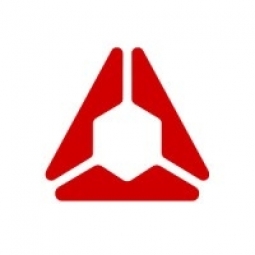Download PDF
Enhancing Digital Agricultural Solutions with Advanced Weather Forecasts: A Case Study on Spire Weather and Mantle Labs
Technology Category
- Platform as a Service (PaaS) - Application Development Platforms
Applicable Industries
- Cement
- Food & Beverage
Use Cases
- Construction Management
- Infrastructure Inspection
The Challenge
Mantle Labs, a pioneering agri-fintech platform, faced a significant challenge in acquiring high-quality weather data from across the globe, including remote locations. The effectiveness of their AI-powered platform, Geobotanics, was limited by the quality of its inputs. They had to engage with multiple data sources that varied in terms of granularity and consistency, which restricted the scope of grid coverage they had access to. There were numerous under-observed territories that lacked the means or the skillset to invest in weather data infrastructure and methodology. As a result, Mantle Labs was unable to fully explore the potential of its digital agricultural solutions on a global scale.
About The Customer
Mantle Labs is a pioneering agri-fintech platform that aims to innovate and scale its functionality to assist the world's 600 million farmers. The company's AI-powered platform, Geobotanics, is designed to deliver timely insights to farmers to help them maximize their profit yields and conduct stronger risk assessments. This is particularly crucial given the impacts of rapidly accelerating climate change on agricultural productivity. Mantle Labs' solutions are especially relevant for developing nations like India, where over 25% of food production occurs and where there is a scarcity of reliable weather infrastructure.
The Solution
To overcome these limitations, Mantle Labs partnered with Spire Global. This partnership aimed to empower international players in the agricultural field by providing them with more accurate and comprehensive weather data. Spire Global's advanced weather forecasts were integrated into Mantle Labs' Geobotanics platform, enhancing its ability to deliver timely insights to farmers. This integration allowed for stronger risk assessments and helped farmers maximize their profit yields, especially in the face of rapidly accelerating climate change. The improved weather data also enabled Mantle Labs to extend its digital agricultural solutions to previously under-observed territories.
Operational Impact
Quantitative Benefit
Related Case Studies.

Case Study
The Kellogg Company
Kellogg keeps a close eye on its trade spend, analyzing large volumes of data and running complex simulations to predict which promotional activities will be the most effective. Kellogg needed to decrease the trade spend but its traditional relational database on premises could not keep up with the pace of demand.

Case Study
System 800xA at Indian Cement Plants
Chettinad Cement recognized that further efficiencies could be achieved in its cement manufacturing process. It looked to investing in comprehensive operational and control technologies to manage and derive productivity and energy efficiency gains from the assets on Line 2, their second plant in India.

Case Study
HEINEKEN Uses the Cloud to Reach 10.5 Million Consumers
For 2012 campaign, the Bond promotion, it planned to launch the campaign at the same time everywhere on the planet. That created unprecedented challenges for HEINEKEN—nowhere more so than in its technology operation. The primary digital content for the campaign was a 100-megabyte movie that had to play flawlessly for millions of viewers worldwide. After all, Bond never fails. No one was going to tolerate a technology failure that might bruise his brand.Previously, HEINEKEN had supported digital media at its outsourced datacenter. But that datacenter lacked the computing resources HEINEKEN needed, and building them—especially to support peak traffic that would total millions of simultaneous hits—would have been both time-consuming and expensive. Nor would it have provided the geographic reach that HEINEKEN needed to minimize latency worldwide.

Case Study
Energy Management System at Sugar Industry
The company wanted to use the information from the system to claim under the renewable energy certificate scheme. The benefit to the company under the renewable energy certificates is Rs 75 million a year. To enable the above, an end-to-end solution for load monitoring, consumption monitoring, online data monitoring, automatic meter data acquisition which can be exported to SAP and other applications is required.

Case Study
Coca Cola Swaziland Conco Case Study
Coco Cola Swaziland, South Africa would like to find a solution that would enable the following results: - Reduce energy consumption by 20% in one year. - Formulate a series of strategic initiatives that would enlist the commitment of corporate management and create employee awareness while helping meet departmental targets and investing in tools that assist with energy management. - Formulate a series of tactical initiatives that would optimize energy usage on the shop floor. These would include charging forklifts and running cold rooms only during off-peak periods, running the dust extractors only during working hours and basing lights and air-conditioning on someone’s presence. - Increase visibility into the factory and other processes. - Enable limited, non-intrusive control functions for certain processes.

Case Study
Temperature Monitoring for Restaurant Food Storage
When it came to implementing a solution, Mr. Nesbitt had an idea of what functionality that he wanted. Although not mandated by Health Canada, Mr. Nesbitt wanted to ensure quality control issues met the highest possible standards as part of his commitment to top-of-class food services. This wish list included an easy-to use temperature-monitoring system that could provide a visible display of the temperatures of all of his refrigerators and freezers, including historical information so that he could review the performance of his equipment. It also had to provide alert notification (but email alerts and SMS text message alerts) to alert key staff in the event that a cooling system was exceeding pre-set warning limits.





